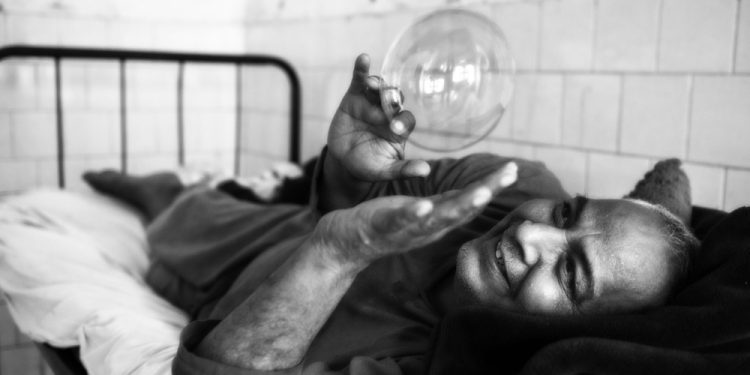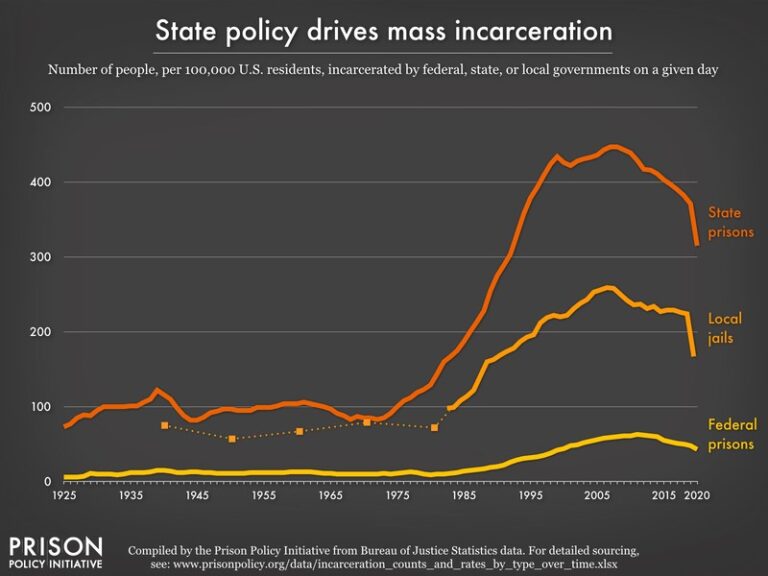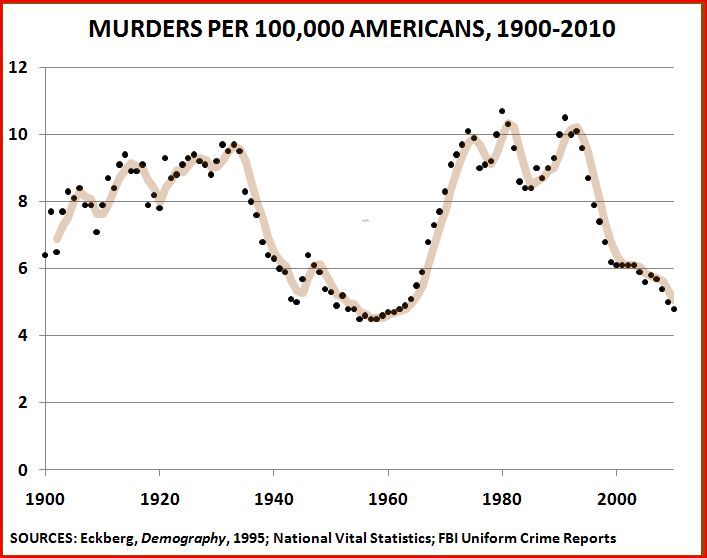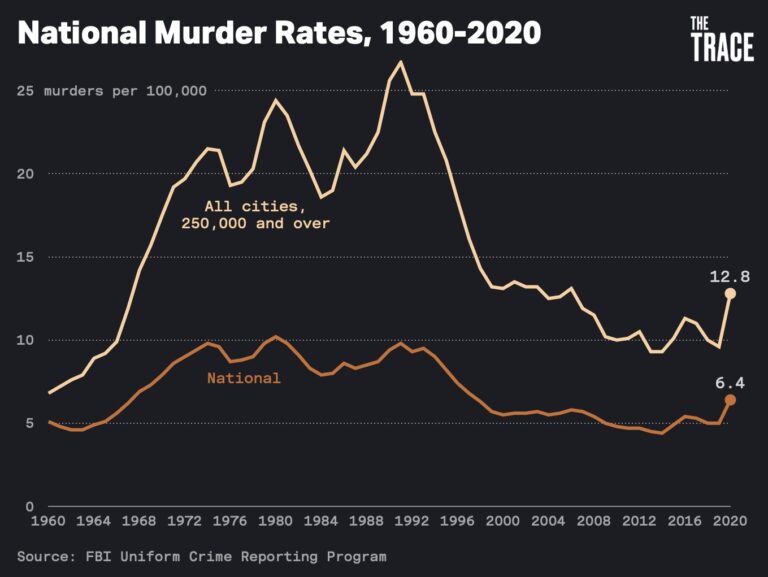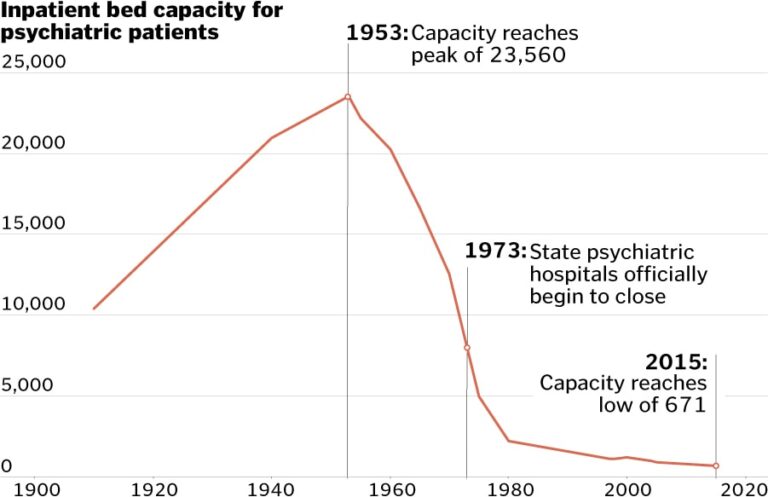One of the most common strategies used by the political left to attack 2nd Amendment supporters is to ramp up the anti-gun hype every time a crime involving a gun is committed. They don’t care much about the tragedy itself, they only care about how they can use it for political gain. However, it’s very important to understand that this is not only about removing gun rights for leftists – It’s also about creating a false association in the public consciousness that guns = crime.
That is to say, they want to condition people to believe that once guns are gone, crime and murder will be gone also. But, firearms have been an integral part of American society for hundreds of years, and gun ownership has been present through times of relative peace as well as times of increased violence.
In the case of countries like the UK with incredibly strict gun laws, muggings, rape and homicides have been rising with knife attacks in particular increasing by 80%. While it is technically more difficult to murder a person with a knife, it’s also a lot easier for larger, stronger assailants and gangs to succeed in harming people when those people have no equalizer. Disarmament makes life EASIER for criminals, not harder.
So, if guns are not the catalyst for rising violence, then what is? In reality, the very people who want guns taken from the hands of law abiding Americans are the same people largely responsible for the spike in homicide rates. Imagine that…
In the US, violent crimes and murders are exponentially higher in Democrat run cities, many of them with increased gun control measures. In fact, of the top 30 most violent cities in the US, 27 of them are Democrat controlled. Wherever leftists dominate politically, violence, theft, rape and murder are sure to follow. Anti-gun proponents often try to cite high homicide numbers in certain conservative states like Texas, but the majority of those crimes are actually committed in cities run by leftists.
The truth is, blue cities are dragging red states and the rest of the country down. According to the statistics, in theory, if the public was to replace all Democrat city politicians with conservative leadership murder rates would immediately plunge across the US by virtue of policy.
But what is it specifically about Democrat leadership that leads to far higher crime? There are other trends to consider, such as incarceration rates in any given state or county, severity of punishment for violent crimes and repeat offenders, and let’s not forget a subject a lot of people don’t want to talk about – The separation of the mentally ill from the rest of society. Leftists often support revolving door policies for criminals, reduced sentences for violent crime (if the perpetrator is a minority) and they are adamantly opposed to incarceration for those with dangerous mental illness.
They’re happy to take away the 2nd Amendment rights of innocent Americans, but they have no interest in keeping criminals in prison or keeping mentally unstable people away from normal society. Perhaps because their goal is NOT to reduce violence, but to use exponential violence in society as a reason to erode the constitution.
Incarceration does in fact work, far better that gun control does. But in order to understand the incarceration rate and its effectiveness in stopping violence, we have to look at two systems simultaneously – Prison incarceration and mental asylum incarceration. The following data shows US incarceration per capita in various prison systems for the past century:
The next graph shows homicide rates per capita for between 1900 to around 2010
And this graph shows homicide rates from the 1960’s up to the 2020s.
One issue that is immediately noticeable is that prison numbers spiked massively starting in the mid-1980s, after which homicide rates began to plunge. Also note that less incarceration in the early 1900s coincides with much higher murder rates across the nation. But what about that dip in murders from the 1930s to the 1960s? What caused that?
Well, it’s not necessarily an economic problem as many progressives might suggest. The country was hitting peak prosperity in the 1920s and murder rates were still sky high. On the opposite end, the system was still in depression turmoil in the 1930s to 1940s, but homicide rates plunged. So, what caused violent crime to fall in that era?
The only factor that seems to coincide with this period of relative peace is the sudden increase in psychiatric incarceration from around the 1930s onward.
While prison rates remained low and mostly static between the mid-1930s to the mid-1960s, the number of mental asylums holding dangerous patients was growing. And, like magic, violence in the US dropped off a cliff.
By extension, as asylums began to shut down in the 1970s, murders jumped back once again to record highs. Without asylums and with low prison incarceration, homicides spread like wildfire and it did not stop until the mid-1980s when prison rates spiked. In other words, the prison system and the legal system had to finally pick up the slack left behind as the mental asylums disappeared.
Finally, take note of the recent jump in homicides and violence in the past few years in graph #3 – It matches almost exactly with falling incarceration trends in Graph #1. This has been mostly encouraged by Democrat policies in blue cities and blue states. Also keep in mind that the Democrats of today are part of a new woke cultism – They are not necessarily the same Democrats from 30 years ago. Woke Democrats want all barriers to criminal activity removed, including incarceration.
Furthermore, mental illness in the US is on the rise. Over 42% of Gen Z has been diagnosed with at least one mental health condition and psychiatric drugs are doing little to help. We have minimal mental illness facilities in place to deal with the influx of unstable people permeating society. We are about to REPEAT the pattern of the early 1900s, with a lower prison population and no asylums, violence will likely continue to spiral out of control.
To be sure, in the past there were some terrible practices involving mental health establishments and it doesn’t do anyone any good to repeat those mistakes. In the early days of psychiatry they caste a wide net that caught a lot of dangerous people, but they also locked up anyone with marginal mental problems as well. This led to abuses.
That said, it’s foolish to dismiss the numbers; asylums worked. They helped to reduce murders dramatically. At least 1% of the human population has psychopathic traits (including lack of empathy) and these people cause at least 30% of all crime in the US. At least 3% of the human population exhibits psychotic tendencies, which means they are prone to abrupt violence without treatment. Something has to be done to address the mentally unstable in our nation. Their odds of recidivism are extremely high, and they will keep on committing the same crimes over and over again until they are stopped.
This is the elephant in the room that the political left doesn’t want to talk about. They try to hide it with social justice platitudes and feel-good welfare programs, but these things are clearly useless. Separating dangerous and insane people from the rest of the population is the only sure method for saving lives in the long run and keeping civilization intact.
The solution is simple and two-fold: Get rid of leftist leaders in major cities that set violent repeat offenders free, and bring back mental health facilities to lock up the crazies if necessary. This is the ONLY WAY to stop the avalanche of violent crime that awaits Americans as the next few years unfold.
Article cross-posted from Alt-Market.


